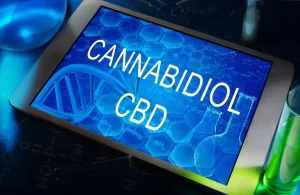Alcohol Addiction: Signs, Complications, and Recovery

This stage keeps the cycle of addiction active as the individual seeks to relieve the preoccupation through further alcohol use, starting the cycle anew. It’s helpful to be aware of your risk level when it comes to alcohol use disorder, so you can take precautions and monitor your drinking as needed. However, alcohol addiction is complex, and anyone can ultimately be affected—even when few risk factors are present. People with alcohol addiction or dependence may have physical factors that make it hard for them to stop drinking or make them feel like they need to keep drinking.
Alcohol’s Effects on the Brain
- For some of us, alcohol becomes something we carry on consuming even though the negative consequences are plain to see.
- Again, addiction is not just about the substance or behavior; it is about the internal “cage” we have built through conditioning, fear, and unprocessed pain.
- Understanding the factors that contribute to addiction and the underlying science behind it is crucial in comprehending why alcohol can be so addictive.
- GABA-A are receptors that decrease the excitability within neurons, which ethanol actually binds to.
- Our state-specific resource guides offer a comprehensive overview of drug and alcohol addiction treatment options available in your area.
GABA-A interferes with the main excitatory neurotransmitter, known as glutamate, which is responsible for carrying signals between nerve cells in the body. Glutamate’s ability to communicate is inhibited when alcohol has been consumed. Remember, breaking free from alcohol addiction is a journey that requires commitment, patience, and support. Understanding the physical aspects of alcohol addiction, such as withdrawal symptoms and tolerance, sheds light on why alcohol can be so addictive. It emphasizes the importance of seeking professional help and support systems when attempting to break free from alcohol addiction.
Substances
- Alcohol addiction means someone can’t stop drinking, even if it’s causing problems.
- Alcohol’s addictive nature can be attributed to its profound effects on the brain and body.
- At the same time, it inhibits the activity of glutamate, which leads to a decrease in brain activity.
Substances or behaviors that trigger the brain’s reward circuits can lead to an inability to abstain from the addictive substance or behavior. The primary symptom of alcohol addiction is this compulsive, harmful use, which persists despite social, health, and other negative impacts. Understanding the interplay between the effects of alcohol on the brain, the role of dopamine, and the influence of genetic and environmental factors provides insight into why alcohol is so addictive. It highlights the complex nature of addiction and the importance of addressing both the biological and environmental factors when treating alcohol addiction. The addictive nature of alcohol is influenced by a combination of genetic and environmental factors. Some individuals may be more predisposed to alcohol addiction due to genetic factors, such as variations in genes that affect alcohol metabolism or brain chemistry.
Family History and Alcoholism
- We walk alongside our clients on their journey; understanding their past and working together to build a new future – transforming lives and sustaining recovery for everyone we support.
- The feeling of needing to consume a substance is called dependency, which can quickly develop into addiction.
- You may need to seek treatment at an inpatient facility if your addiction to alcohol is severe.
- Over time, that substance or behaviour can start to take priority over other things and we can start to feel uneasy when we are not feeding our habit.
The physical factors that make alcohol addictive are the alcoholism treatment release of dopamine, changes in neurotransmitter levels, building tolerance, triggering withdrawal symptoms, and altering brain structure. Alcohol alters neurotransmitter activity, builds tolerance, triggers withdrawal symptoms, and even changes brain structures, all of which induce the development and maintenance of alcohol addiction. These physical factors are essential for creating effective treatment strategies. We publish material that is researched, cited, edited and reviewed by licensed medical professionals.

Social and Environmental Influences on Alcoholism

Someone with an alcohol addiction who has remained sober for months or years may find themselves drinking again. They may binge drink once or drink for a period of time before getting sober again. It’s important that the person get back on track and resume treatment. When a person drinks regularly over a period of time, their body starts to develop a tolerance to alcohol. This can make it harder for a person to resist the urge to drink, even when they know it’s harmful.
Online Therapy Can Help

Studies have shown certain combinations of genes have a strong relationship to alcoholism. Some behavioral genes could also be responsible for a tendency toward alcoholism. Although the specific genes have not been pinpointed, genetic makeup nevertheless plays a major role in the addictiveness of alcohol. Getting help for alcoholism at The Recovery Village Columbus can greatly improve the chances of why is alcohol addictive overcoming alcohol addiction. The center’s team of professionals works closely with each patient to create and continuously adjust treatment plans that ensure long-term success.

Addiction Therapy Programs
It’s important to note that withdrawal symptoms can be dangerous, and for individuals with a severe alcohol addiction, medical supervision may be necessary to manage the withdrawal process safely. Over time, the brain adapts to the presence of alcohol by reducing the production of dopamine and the sensitivity of dopamine receptors. As a result, individuals may need to consume larger amounts of alcohol to experience the same pleasurable effects. This phenomenon, known as tolerance, can contribute to the development of addiction. We have seen so far that alcohol is addictive due to chemical changes in the brain.


